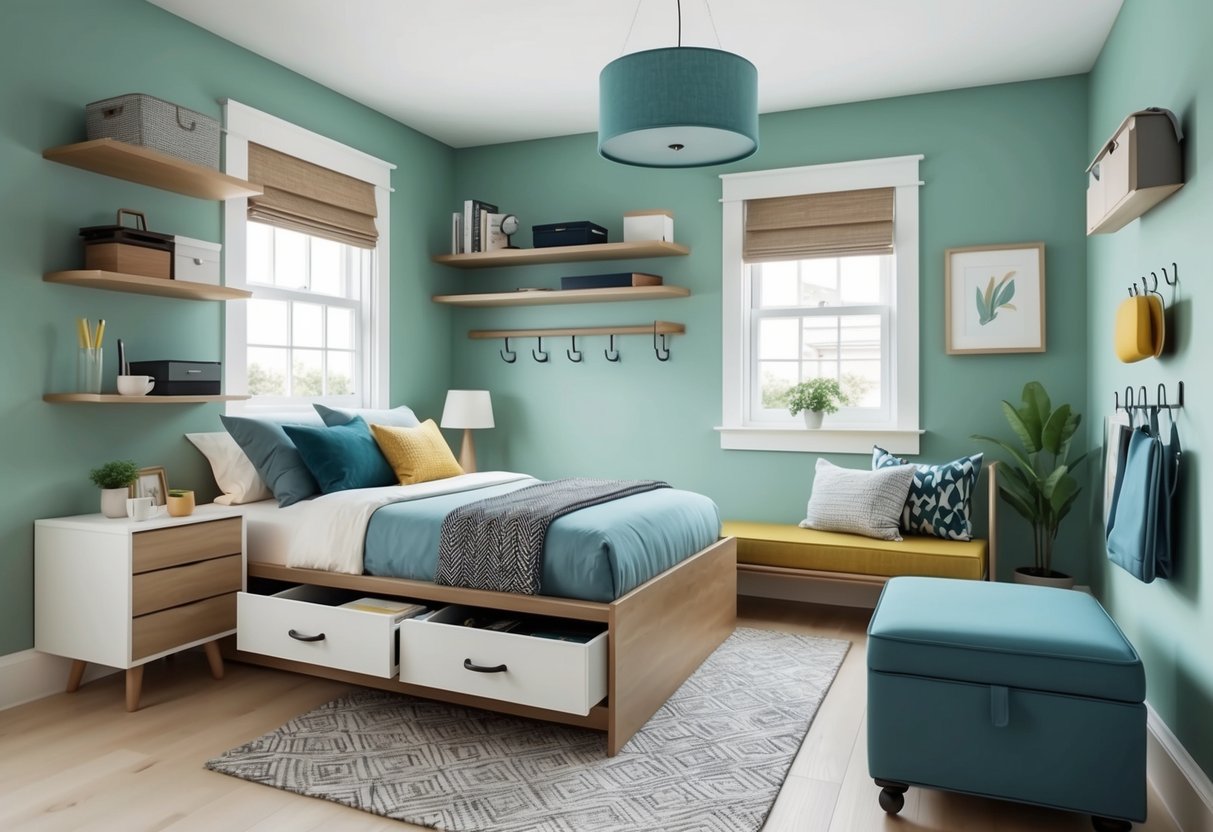
Pantry Organization Ideas for Tiny Spaces
Small homes demand smart storage solutions to keep pantry clutter at bay and use available space efficiently. Making the most of every shelf, drawer, and corner can transform even the most compact pantry into a tidy, functional area.
Pull-Out Pantry Shelves
Pull-out pantry shelves allow for efficient use of deep cabinets and awkward corners by making every item accessible. Instead of reaching and rummaging through cluttered shelves, users can simply slide out the contents, reducing food waste and helping with inventory checks.
These shelves are ideal for narrow spaces between cabinets or beside refrigerators, where traditional shelves may not fit. Common styles include wire racks and solid-surface drawers, both of which can be mounted to existing cabinetry for a seamless look.
Adjustable dividers let users customize compartments for spices, canned goods, or snacks. According to Good Housekeeping, pull-out systems improve visibility and keep every item within easy reach.
Installing soft-close mechanisms cuts down on noise and wear. Clear labeling at the front of each shelf increases organization further.
Repairs and upgrades are straightforward—these shelves typically require only simple hardware and a screwdriver.
Stackable Bins and Jars
Stackable bins and jars are essential pantry organization ideas for small spaces, especially for open shelving. By using containers that fit neatly atop one another, people can take advantage of vertical storage.
Clear or labeled jars simplify finding ingredients quickly and help monitor supply levels at a glance. Bins come in multiple sizes and materials, including clear plastic, wire mesh, and bamboo.
They prevent small items like snacks, spice packets, and baking supplies from scattering across shelves. Stackable solutions are available for almost every pantry item, ensuring food stays fresh when sealed tightly.
Adopting a uniform container style creates a tidy, cohesive look and reduces wasted space. As highlighted by House Beautiful’s list of clever pantry organization ideas, using stackable jars is especially effective for maximizing kitchen storage.
Organizing by type and frequency of use further streamlines pantry access and meal prep.
Sliding Doors and Flexible Partitions
Sliding doors and flexible partitions enable homeowners to reclaim valuable floor space in studio apartments and small homes. These solutions replace bulky room dividers and traditional doors, allowing for a more open feel while maintaining privacy and functionality.
Pocket Doors
Pocket doors slide directly into the wall, eliminating the swing space required by standard hinged doors. This is especially important in tiny spaces where every inch matters, such as closets, bathrooms, or between living and sleeping areas.
They offer a clean, minimalist look that blends with most décor styles and can be installed in both existing walls and new builds. Key benefits of pocket doors include:
- Space-saving: No need to account for door clearance.
- Smooth movement: Many modern pocket doors glide quietly on rails.
- Variety: Options include frosted glass for privacy or wood for warmth.
For those seeking to make their home layout more adaptable, sliding doors and pocket doors are ideal for dividing and connecting rooms without sacrificing usable area. They also help to create flexible zoning in studio apartments, making a single room feel multifunctional.
Folding Screens as Storage Dividers
Folding screens can do double duty as both partitions and storage solutions. Placing a folding screen with built-in shelves or pockets allows residents of compact homes or studio apartments to separate functional zones while keeping essential items close at hand.
Consider options with integrated storage such as:
- Shelving panels: Display books, décor, or small electronics.
- Hanging pockets: Store accessories, mail, or keys.
- Pegboard styles: Hang baskets, kitchen utensils, or craft supplies.
Folding screens are lightweight and easy to move, making it simple to reconfigure the layout as needs change. Choose materials and finishes that complement the overall style of the home to maintain a unified look while boosting storage capacity.